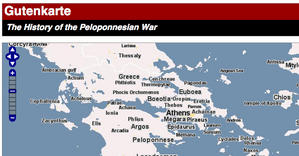 In the category of cool technology for your iPod has to be the Griffin Technology: iKaraoke. This microphone and iPod connector can be used to sing along to your favorite tunes. It apparantly “isolates the lead vocal track, then fades it, giving your voice room to make that favorite tune yours.”
In the category of cool technology for your iPod has to be the Griffin Technology: iKaraoke. This microphone and iPod connector can be used to sing along to your favorite tunes. It apparantly “isolates the lead vocal track, then fades it, giving your voice room to make that favorite tune yours.”
Even better, they have software, the TunePrompter, that you can download and use to create a video with the lyrics syncronized to the tune. The free (and beta) software then creates a video for uploading to the iPod to work with the iKaraoke.

Very neat, even if I hate karaoke.









